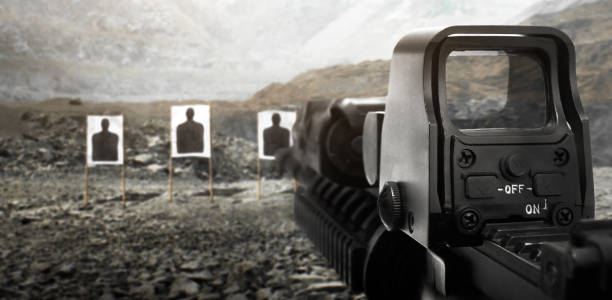
Hypersonic Weapons: The Next Step in Offensive Warfare
The world of warfare is undergoing a dramatic shift with the development and deployment of hypersonic weapons, a technology that has the potential to redefine offensive strategies and global security dynamics. Hypersonic weapons are capable of traveling at speeds greater than Mach 5—five times the speed of sound—allowing them to bypass traditional missile defenses and deliver high-impact payloads with unprecedented speed and accuracy. With this advanced capability, hypersonic weapons are positioned as a game-changer, pushing forward the frontiers of modern warfare and posing significant challenges to international security frameworks. Understanding the implications and capabilities of hypersonic weapons offers insight into how global powers are gearing up for a new era of military strategy and technology.
Rise of Hypersonic Weapons in Modern Warfare
In recent years, both established military powers and emerging nations have invested heavily in hypersonic technology, viewing it as the next step in offensive warfare. Countries like the United States, China, and Russia are racing to develop these advanced systems, aiming to gain a strategic advantage in the global arena. The appeal of hypersonic weapons lies not only in their speed but also in their maneuverability. Unlike traditional ballistic missiles that follow a predictable trajectory, hypersonic weapons can adjust their flight paths, making them difficult to intercept. This maneuverability poses significant challenges to defense systems, leaving nations with limited options for protecting critical assets and populations.
Hypersonic Weapons and the Impact on Defense Strategies
The speed and unpredictability of hypersonic weapons have prompted military strategists to reassess their defensive postures. Existing missile defense systems, which were designed to counter conventional threats, may not be effective against these new weapons. As hypersonic technology continues to advance, nations are exploring new defense strategies, including the development of space-based sensors and interceptors, to counter the unique capabilities of hypersonic weapons. However, the high costs and technical complexities involved in developing such countermeasures present a significant hurdle. This gap in defense capabilities has spurred a renewed focus on deterrence and strategic stability, as countries recognize the risks associated with an unregulated hypersonic arms race.
Story of Modern Warfare
One of the most engaging explorations of the future of warfare is illustrated in the novel Above Scorched Skies: A Story of Modern Warfare. This narrative delves into the potential consequences of hypersonic weaponry on global security, providing readers with a thought-provoking perspective on how these technologies might influence future conflicts. Through a gripping storyline, the novel underscores the ethical, strategic, and tactical dilemmas posed by hypersonic weapons, emphasizing how nations might grapple with the threat of near-instantaneous attacks. As weapons continue to evolve, Above Scorched Skies serves as a relevant lens through which readers can understand the complexities of modern warfare and the transformative power of hypersonic technologies.
Advantages and Limitations
The strategic appeal of hypersonic weapons lies in several key advantages that make them formidable tools in offensive warfare. Their primary advantage is speed; the ability to strike targets thousands of miles away in minutes drastically reduces reaction times, potentially catching adversaries off guard. This speed, coupled with their maneuverability, allows hypersonic weapons to bypass most traditional missile defenses. Additionally, weapons offer greater accuracy than conventional missiles, increasing the likelihood of successfully hitting high-value targets.
However, despite their advantages, weapons come with notable limitations. The technology is still relatively new, and there are significant technical challenges in achieving consistent reliability and control. Furthermore, the high cost of development and deployment limits the accessibility of hypersonic weapons to only the wealthiest nations. As these technologies advance, addressing these limitations will be crucial for countries looking to incorporate hypersonic weapons into their long-term military strategies.
Global Power Struggle: The Hypersonic Arms Race
The global race to develop hypersonic weapons has intensified geopolitical tensions, with major powers competing to establish dominance in this cutting-edge domain. The U.S., China, and Russia are at the forefront, each seeking to gain a technological edge that could shift the balance of power. For instance, Russia has unveiled its Avangard hypersonic glide vehicle, while China has tested several hypersonic systems, emphasizing their potential for quick-strike capabilities. The U.S., in response, is accelerating its hypersonic programs, aiming to close any technological gaps and maintain its position as a global military leader. This competition raises concerns about an arms race that could destabilize international security, as countries prioritize offensive capabilities over defensive solutions.
Ethical and Strategic Implications of Hypersonic Weapons
As hypersonic technology advances, ethical questions surrounding its use have come to the forefront. The speed and precision of hypersonic weapons heighten the risk of miscalculations and accidental escalation. In a crisis, a hypersonic weapon strike could be misinterpreted as an all-out offensive, triggering a retaliatory response before the true nature of the attack is understood. This uncertainty complicates the strategic calculus for countries, as they must weigh the potential benefits of hypersonic weapons against the risks of unintended conflict. Additionally, the integration of weapons into military arsenals may prompt a shift away from arms control agreements, as existing treaties do not account for this new class of weaponry.
Future of Hypersonic Weapons in Warfare
The development and deployment of hypersonic weapons are expected to continue shaping the landscape of warfare for years to come. As more countries invest in hypersonic technology, the global security environment will likely evolve to reflect new threats and vulnerabilities. Military strategists are exploring the potential of using weapons in conjunction with other advanced technologies, such as artificial intelligence and cyber warfare, to create a multi-domain approach to modern conflicts. This integration could amplify the impact of weapons, further transforming the nature of warfare and challenging traditional notions of defense and security.



